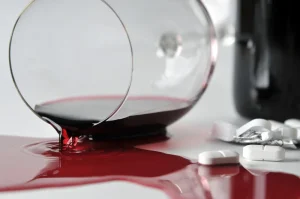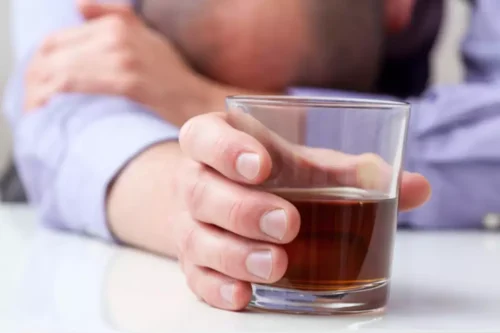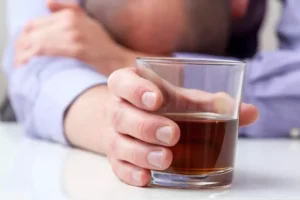
While there’s no definitive withdrawal test, your healthcare team may check a urine sample to rule out any other drug interactions that may be causing your symptoms. This is part of the reason these substances can cause dependence. Without medication, these opioid receptors are there to bind with your body’s natural feel-good chemicals, known as endorphins. If you do develop methadone dependence, gradually tapering off the medication can cause less severe symptoms. Your doctor may prescribe methadone if you need relief from chronic (long-term) pain, or if no other pain medications have made a difference. Replacing a drug your body has become dependent on with a prescription medication is a part of recovery known as medication-assisted treatment.
Before taking this medicine

That is, detox involves medications and practices to ensure patient safety and to ease withdrawal symptoms. Detox is simply one part of a multipart treatment program that can include multiple levels of care, such as inpatient treatment, outpatient services, aftercare, and more. Quitting cold turkey is very dangerous because it all but guarantees that the methadone user will experience most if not all of the withdrawal side effects to the extreme. There is evidence of patients going clinically insane after suddenly stopping methadone use and many of the withdrawal side effects are considered permanent damage. The human brain is simply incapable of dealing with the abrupt changes to its chemistry and function.
About Medical News Today
- Tell your prescribing doctor about all medications that you take.
- If your doctor has prescribed methadone for pain or opioid withdrawal, he or she should help you establish a safe dosage and taper schedule.
- First, drug withdrawal is a physiological response to the sudden quitting or drastic reduction of use of a substance to which the body has become dependent on having in the system.
- It is essential that clinical management programs are put in place routinely in jails, prisons and other facilities where withdrawal is likely in order to avert these avoidable deaths.
- Also, the body never produces opioids in large enough quantities to cause an overdose.
Buprenorphine is another type of opioid replacement therapy that can treat drug addiction treatment opioid addiction. However, people on methadone have to stop taking it for several days before starting buprenorphine or they will experience precipitated withdrawal. When you quit taking methadone, it takes several days or weeks for your body to expel all of it from various tissues. The first symptoms of withdrawal may not appear until more than a day after last use.

Severe symptoms are:
For example, a person might feel anxious and cold one minute then depressed and hot a few minutes later. Keep reading to learn more about methadone and methadone withdrawal. Although methadone addiction is very rare, if a person does develop an addiction to it, withdrawal can be difficult. methadone withdrawal Diarrhea is another very uncomfortable and potentially dangerous withdrawal symptom.

Methadone Treatment for Opioid Use Disorder
In severe cases, intravenous rehydration may be needed to restore fluid levels. When navigating the realm of methadone withdrawal, it’s akin to treading through a murky sea with hidden dangers lurking beneath the surface. Based on your answers, your healthcare team will determine what form of therapy may be appropriate for your needs. Used for thousands of years as a form of pain relief, opium eventually gave rise to commercial medications, like morphine and fentanyl. It is essential that clinical management programs are put in place routinely in jails, prisons and other facilities where withdrawal is likely in order to avert these avoidable deaths. Methadone withdrawal can be challenging for those receiving it for pain or addiction.
Treatment & Support
It’s also commonly used to treat dependence to other opioids, like oxycodone and heroin. By using one drug to replace another, you can often treat withdrawal symptoms, dependency cravings, and habit-forming effects in the brain. More intense withdrawal symptoms may require hospitalization and other medications. One medication used primarily in the inpatient setting is clonidine. Opioid withdrawal can be very uncomfortable, and many people continue taking these drugs to avoid unpleasant symptoms, or they try to manage these symptoms on their own. This is sometimes referred to as “protracted abstinence.” It’s important to discuss ongoing symptoms with a healthcare professional.

Our people
- It does this by initiating counter-regulatory processes to find a new balance that incorporates the drug.
- Methadone is an opioid that doctors may prescribe to people experiencing pain for whom other opioids do not work or to those with a high risk of developing addiction.
- Methadone treatment for other opioid addictions is a medical process that requires ongoing support.
- If you’re experiencing methadone withdrawal, your healthcare team may reevaluate your taper schedule.
- Even if you don’t experience vomiting, nausea can be very uncomfortable.
This serious adverse effect can occur whether or not you’ve had a history of dental problems. However, medical treatment in a controlled environment can make you more comfortable and lead to a greater chance of success. Opioid withdrawal can cause symptoms, such as restlessness, excessive sweating, and digestive issues, among others. Enter medications to view a detailed interaction report using our Drug Interaction Checker. Hydroxyzine (Vistaril, Atarax) is used to treat anxiety disorders and allergic conditions …
